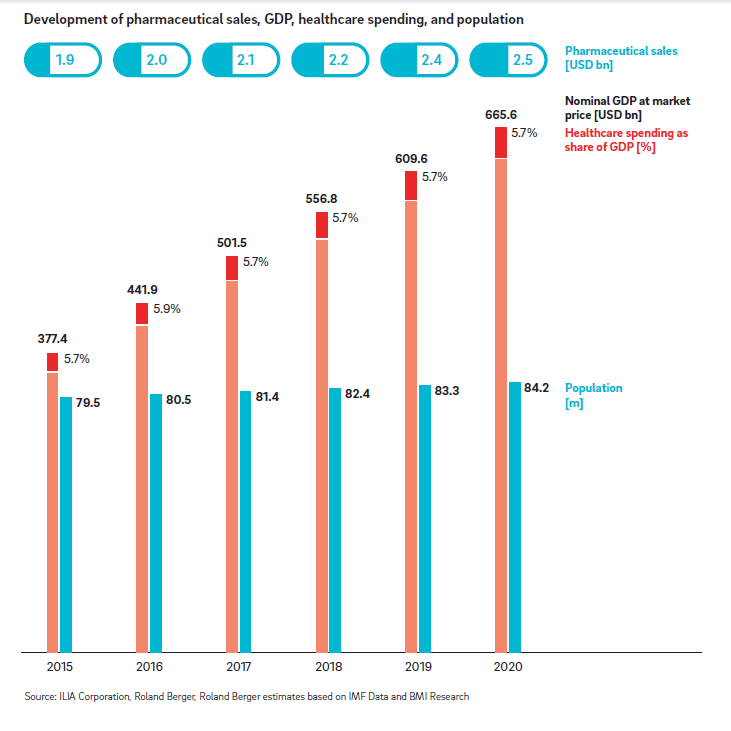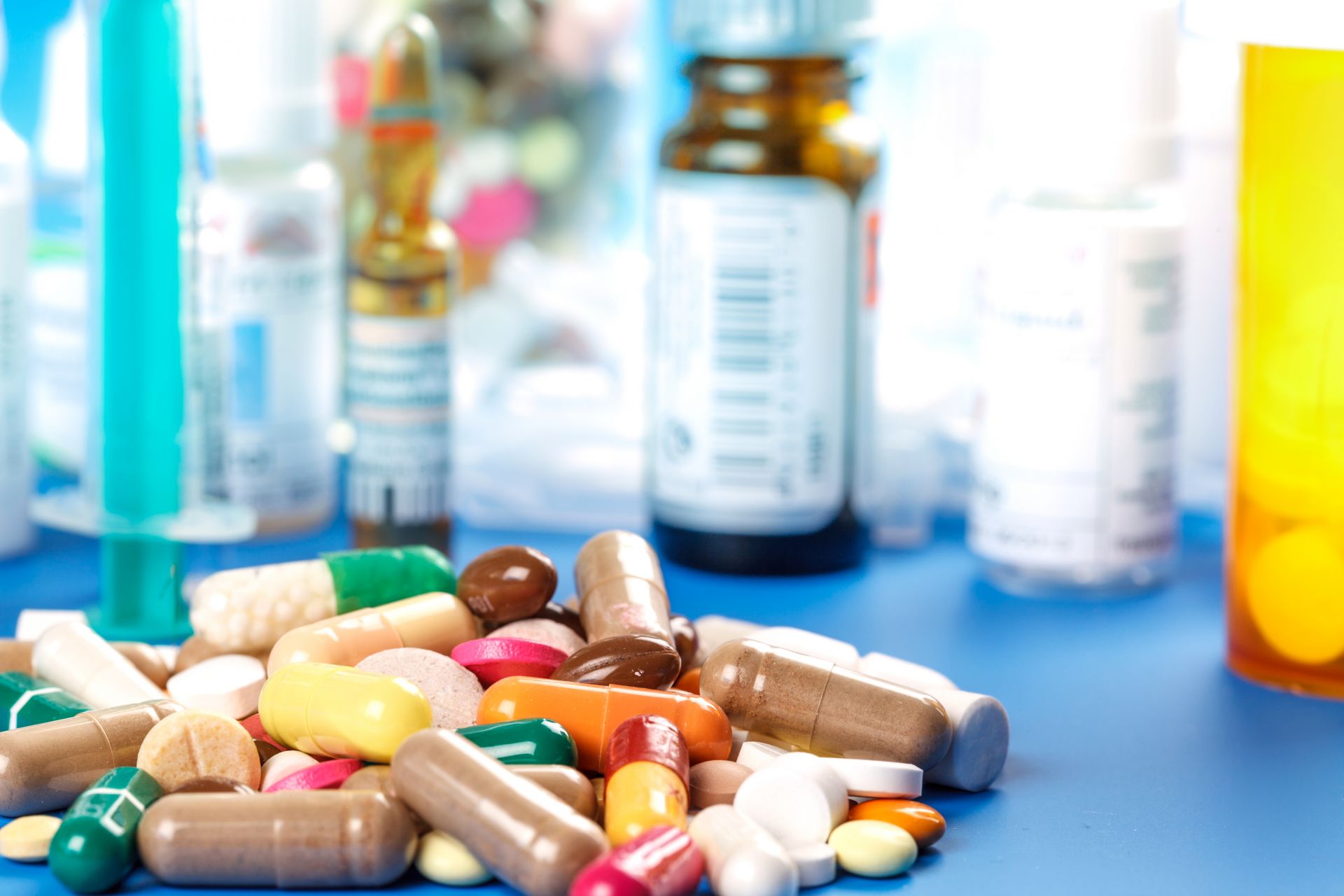Iran has one of the longest histories of medical practice in the world.
The ancient Mesopotamians, for example, were carving diagnoses and prescriptions into stone tablets at least 4,100 years ago. Some still survive, as do some of the more rational treatments, such as the use of antiseptic plasters to cover wounds.
Much later, in around 300 AD, the university at Gundeshapur became a recognized center for the teaching of evidence-based medicine, and it is thought Persians established the modern hospital system around the same time.
The Canon of Medicine, a medical encyclopedia completed in 1025 by the Persian philosopher Ibn Sina, remained an influential text in European universities until the 1650s, reads a joint study by Tehran-based management consulting firm ILIA Corporation and German consulting firm Roland Berger.
In the modern era, however, Iran has fallen off the world's medical and pharmaceutical radar.
Crippling international sanctions have restricted trade with Iran, severely affecting the pharmaceutical sector and resulting in price controls and a lack of transparency. But since January 2016, most international sanctions have been lifted under the internationally agreed Joint Comprehensive Plan of Action.
International exporters and investors are free to return, although some sanctions–for example related to US-related banking transactions–remain. These are under review and, in the meantime, will likely have limited effect on healthcare companies that pay close attention to the remaining compliance requirements.
The political situation in Iran has also developed further. The reformist government that signed the nuclear agreement has been working hard to maintain market stability and openness, and is actively seeking foreign investment.
Indeed, the level of progress achieved already since the removal of sanctions provides sizable coverage against any deviation in the course of policies following changes or transitions in administrations both inside as well as outside Iran.
As a result, early movers have the opportunity of gaining a headstart in entering the Iranian market, provided they are aware of the risks and ambiguities and know how to mitigate them.
Five key factors stand in favor of market entrants seeking growth opportunities in Iran's pharma market. Parts of the study follow:
1. Positive Market Dynamics

Iran's economy is in good shape. Its nominal gross domestic product (at market price) is forecast to grow by around 12% annually, reaching a nominal GDP of $665 billion in 2020. Inflation has been halved since 2013 to a 25-year low of around 10%.
These and other positive economic indicators explain why Goldman Sachs has identified Iran as having one of the highest growth potentials outside the BRIC nations.
The outlook for healthcare is particularly rosy. Spending is forecasted to grow at a similar rate to GDP, reaching nearly $40 billion (6% of overall spending) in 2020, driven by rising Health Ministry expenditure.
Iran's population is also on the up. By 2020, it will have 84.2 million inhabitants–more than Germany's. Roughly 30% will be of ages 19 or under, 60% of ages 20 to 59 and 10% of over 60.
This represents a growing customer base for pharmaceutical products, with baby boomers of the 1980s now entering the workforce and fueling out-of-pocket spending.
In addition, the proportionally high urban population enjoys good access to basic healthcare. In rural areas, access is growing due to government reforms, further boosting potential. More than 90% of the population are covered by one of the four government-run health insurers.
As a result, the Iranian pharmaceuticals market–valued by BMI Research at $1.9 billion in 2015–is predicted to grow at a compound annual growth rate of 6%.
By 2025, it will be the fourth largest in the Middle East and North Africa, after Turkey, Egypt and Saudi Arabia.
2. Pharmaceutical Infrastructure
Sanctions have forced Iran to build a substantial, largely self-sufficient drug production infrastructure. Some 60 plants produce almost 40 billion drug units each year, meeting 96% of domestic demand. Most do not meet international good manufacturing practice standards, but government initiatives are addressing this.
Research and development focuses mainly on new generic drugs, although investment in novel products is increasing: 12 new treatments for diseases, including cancer and diabetes, were launched in 2015, for example.
Iran’s biotechnology capabilities are also improving. The country is queuing among the world's leading nations for stem-cell research and has a considerable infrastructure of related facilities, e.g. for plasmapheresis (blood plasma treatment).
The biggest biopharmaceutical company, CinnaGen, produces Biosimilars of leading immunology and cancer drugs, among others, and invests 20% of revenues in R&D.
In a nod to the global trend of establishing biotechnology hubs, Iran is also building a government-backed $2 billion "Industrial Pharmaceutical City" near Tehran. It will house incubators and startups under the same roof as research labs and biotech producers.
Foreign investors will be exempted from taxes and it is hoped that the venture will attract international experts.
3. Skilled Workforce
Some 80% of Iranians receive a secondary education and the literacy rate is more than 98%, according to the UN. When it comes to science and medicine, its high standards of education appear to be paying off.
In 2012, the science database Scopus ranked Iran 17th in the world in terms of output of scientific papers and 23rd in terms of highly cited medical articles in 2011.
This indicates a significant research base, as evidenced by internationally recognized biomedical centers such as the Pasteur Institute of Iran.
In 2014, there were 0.93 physicians per 1,000 people according to BMI Research, about 2.5 times less than the US but more than South Africa. However, Iran has suffered from a brain drain in recent years mainly because of low domestic incomes and market challenges.

4. Competitive Landscape
Iran has a lively pharmaceuticals market. The sector is made up of about 100 companies, with most focused on drug manufacturing. Some also carry out R&D, import non-locally produced drugs or provide distribution, offering ample potential for cooperation.
The largest producer is Darou Pakhsh Pharmaceutical Manufacturing Company, which also distributes drugs through its own subsidiary. The company generated revenues of over $700 million in 2014 and is listed on Tehran Stock Exchange.
The sector is, however, largely consolidated. Most companies are owned by publicly controlled listed investors, such as the Ta'min Pharmaceutical Group. Only a few private players, such as cosmetics company Dr. Abidi, exist.

5. Trade Crossroads
From the ancient Silk Road to China's new One Belt, One Road project, Iran has always enjoyed a prime position on international trade routes. Its geographic location also makes it an ideal export hub for Central Asia (especially Afghanistan, Russia, Syria and Iraq), a position enhanced by special economic zones and ready access to its 15 neighbors (population: 400 million) through trade agreements.
Iran's biotech and drug-making expertise has seen it win several large export deals. For example, Afghanistan sources 33% of its pharmaceutical products from Iran, and 11% of all Iran's pharma exports–worth a total of $159 million in 2014–go to Syria under a contract agreement. Germany receives 16%.
As Iran ramps up production, its regional trade relations are likely to grow and help expand its export horizons beyond the Middle East.


